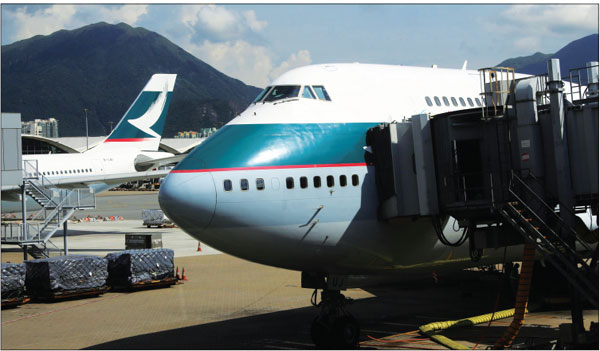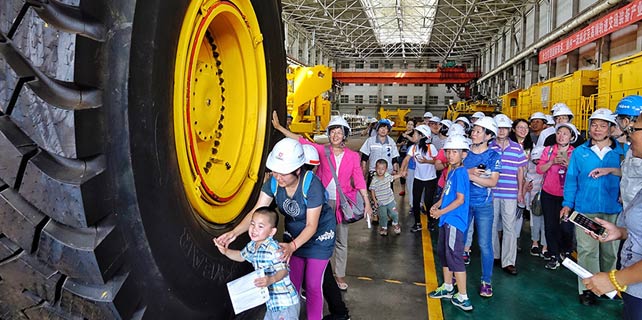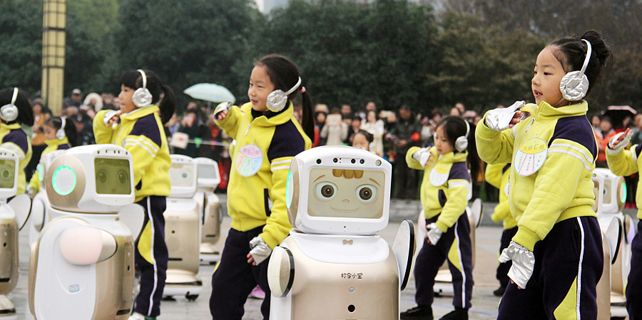Uphill battle to help flyers take off on time
|
Hong Kong International Airport saw its lowest-ever punctuality rate this summer, slipping behind those of major cities on the Chinese mainland. Various factors, including bad weather and aircraft malfunctions, were blamed for departure delays. Provided to China Daily |
Hong Kong airport passengers suffer frequent delays amid capacity crunch
This summer vacation has witnessed the lowest-ever punctuality rate at Hong Kong International Airport (HKIA) but, unfortunately, delays seem to have been and will be a reality for years.
The HKIA recorded a stunning 15 percent to 20 percent punctuality rate, respectively, in July and August - ranking at the bottom of 88 airports with more than 2,000 monthly flight movements in the Asia-Pacific region, according to air data provider VariFlight.
The data include all flights that actually took off, and those less than 30 minutes behind schedule are regarded as punctual. Based on the calculation, HKIA's average delay is one hour.
This has continued throughout this year. Tanja Lan, an insurance company agent and frequent flyer from Hong Kong, has had several painful experiences. Up to last month, she had flown from HKIA six times in this year, with four of the flights delayed. Two of these were early-morning flights.
The Air China flight CA118 she took to Beijing on July 26 was the most memorable, Lan recalled. She had chosen this flight, scheduled to be take off at 8:30 am, to make an important appointment at noon.
However, the flight waited by the runway for nearly two hours and only reached the gate at 1:20 pm. It forced her to reschedule her appointment.
But her story was not the most tragic among those on board. Sitting beside her was a French couple with their baby, who live and work in Hong Kong, going back to Paris via Beijing for home visit. According to the schedule, they had nearly three hours to deal with the transfer, which they said had been enough for their previous trips, Lan recalled as she had chatted with the couple and helped them with some translations.
In the end, they missed their flight to Paris and had to wait in a long queue at the rescheduling counter after arriving at Beijing, Lan recalled.
"This may doom our confidence in arranging urgent meetings with clients," Lan stressed. "If this continues, my colleagues and I may have to take one more day off for a business trip, which is ridiculous in this era of mobility."
According to VariFlight data, last summer, HKIA achieved 53 percent on-time departures on average - at least on the same level as airports in Beijing and Shanghai. But this summer, even the Guangzhou Baiyun International Airport, where 19,305 flights are executed - 4,000 more than in HKIA - recorded about 50 percent on-time departure in August.
In response, however, the Civil Aviation Department (CAD) said the official punctuality rate was 69 percent from last year to June this year, even 4 percent higher than in 2015.
However, the department's official definition of punctuality is a plane leaves its parking bay within 15 minutes of schedule - not including taxiing or queuing time after that.
The authority states there are many reasons for delays, including bad weather, air-traffic control, aircraft malfunction and airline service changes, but gives no statistics on the proportion in each category.
Extreme weather is no doubt one critical reason as the city suffered a dozen typhoons this summer, including Hato for which the rare Hurricane Signal No 10 was issued.
Crowded airspace
From July 1 to Aug 24, the CAD handled about 2,100 flights every day on average, including flight movements at HKIA and overflights, an increase of about 7 percent compared with the same period last year, CAD Director-General Simon Li said.
This means the department must manage 1.45 flights every minute and even more when considering there are almost no flights between 3 am and 6 am.
Congested airspace is also another issue that has been blamed for the low punctuality rate of HKIA for a long time. In the Pearl River Delta (PRD) area, five airports share 150 square-kilometers of airspace.
And it is only becoming more crowded. The International Air Transport Association, the trade association of the world's airlines, expects air passenger demand in the PRD to reach 387 million in 2030, but the five airports here can only provide for an estimated 240 million.
HKIA's third runway system will provide more space for planes to land but won't be completed until 2022.
"I'm afraid there's not much hope for improving on-time departure and landing until the third runway opens," said Achim Czerny, associate professor of the Department of Logistics and Maritime Studies at Hong Kong Polytechnic University.
"HKIA is making full use of its capacity today. This makes it more difficult to recover from disruptions in flight operations caused by, for example, bad weather conditions," he added.
But the professor pointed out delays are not always "evil". Under such circumstances, delaying flights somehow becomes the sacrifice we have to accept. He noted that some airports try to control the number of flights in a more restrictive way to ensure they can recover from interruptions in a shorter period of time.
A digital solution
Leon Lee, an analyst from VariFlight, presented one solution which he believes will reduce flight delays by 10 percent.
His suggestion is to improve airport operating efficiency through an Airport Collaborative Decision Making system (A-CDM) between airports, airlines and air-traffic controllers.
The CAD introduced a new Air Traffic Management System (ATMS) last year, gradually replacing the old one that had been used for almost 20 years and which is expected to allow for five times more flights than the old one.
But Lee stressed that the ATMS focuses on managing flight plans, while the core of the A-CDM is to share information among the above three sides on a platform.
Most of Europe's large airports have adopted the A-CDM system and the Chinese mainland's aviation authority is also promoting it, requiring airports with passenger throughput of more than 30 million to link their A-CDM data with the air control authority's by the end of next year.
Lee said the difficulty was that airport and airline companies are prudent and reluctant to share data due to safety concerns and a lack of accurate data to provide.
"It means a digital upgrade of operating and a complete change of working process, which require airports to know the exact readiness of land facilities, such as real-time location of airport vehicles," he said.
Contact the writers at grace@chinadailyhk.com

















